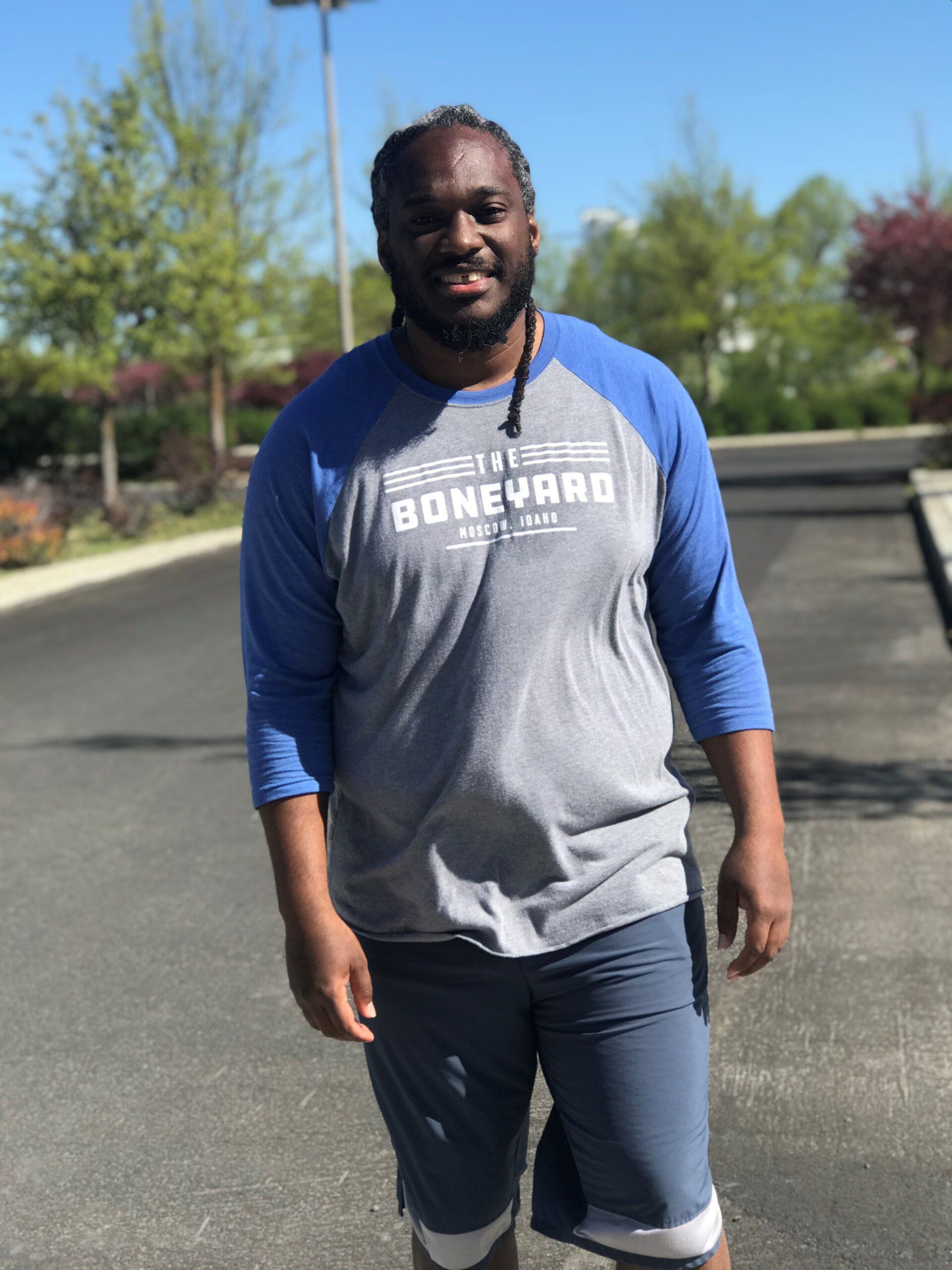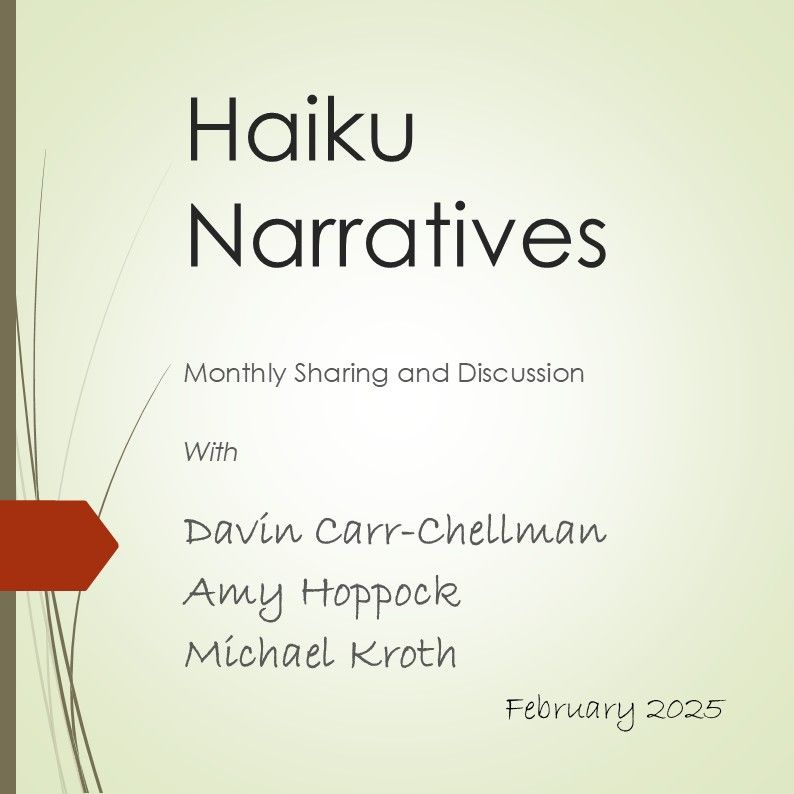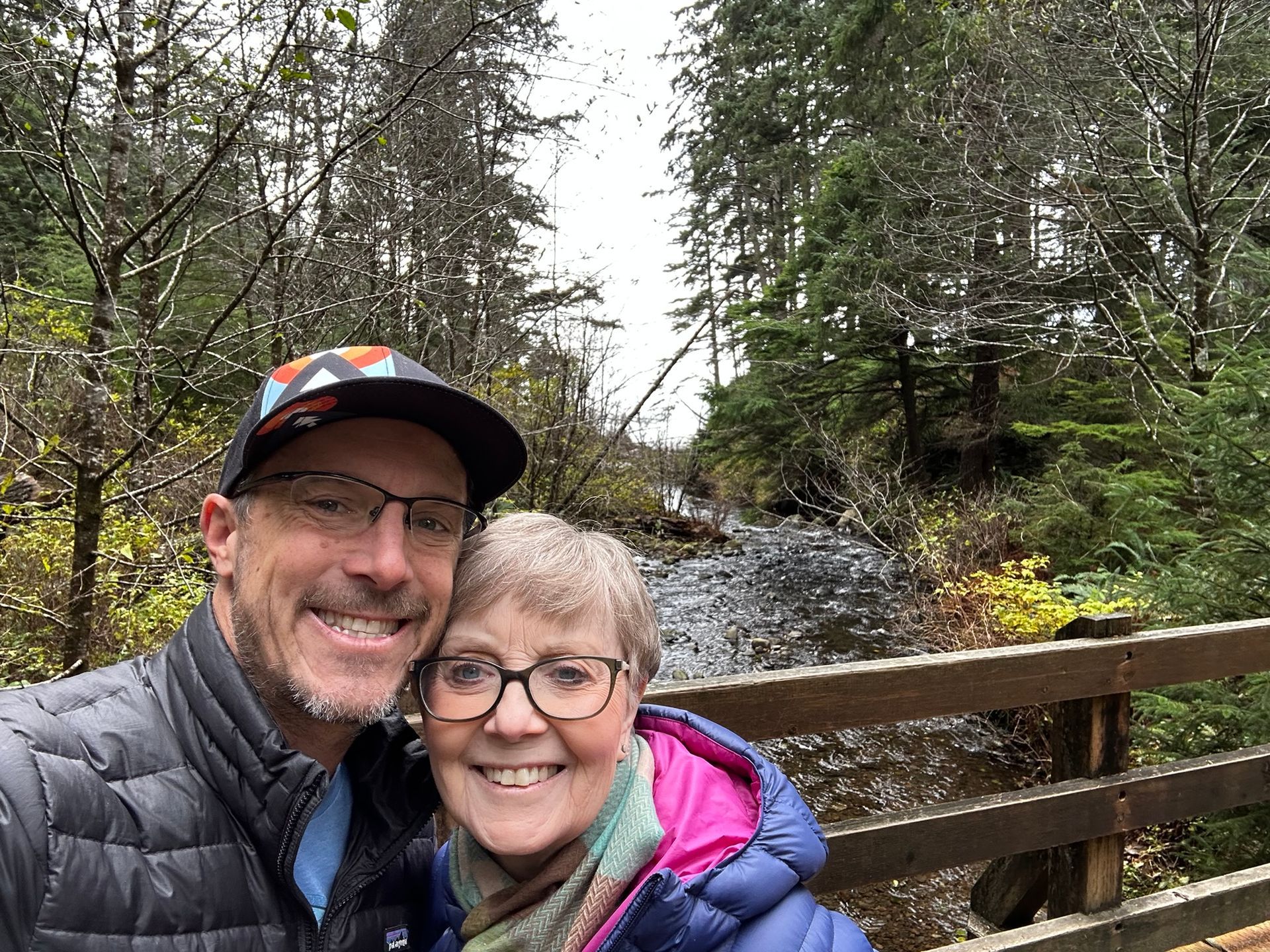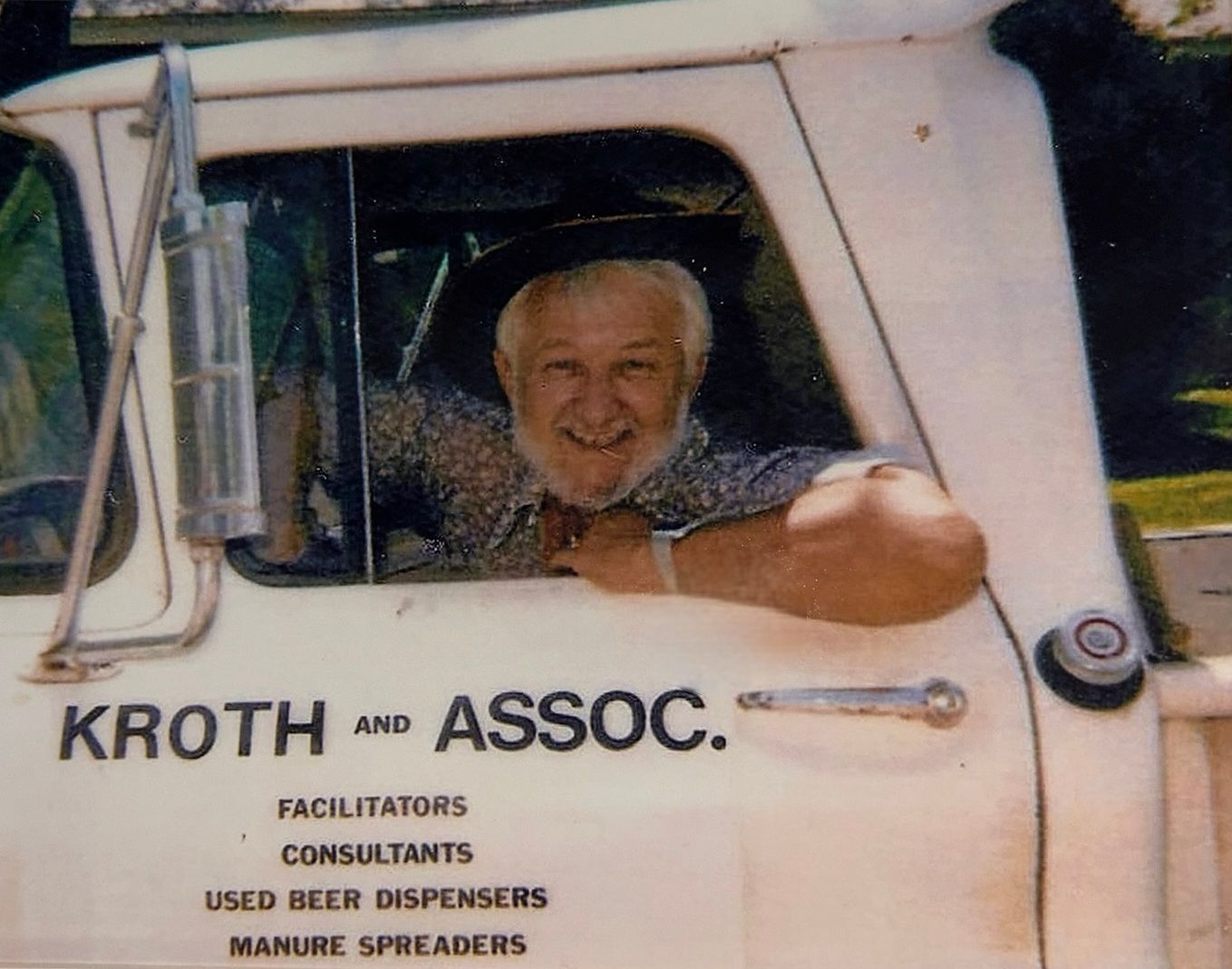Liberating to Flourish: Development of Faculty and Staff Across the Career Span
What if your college or university could be thoughtful and strategic about supporting the careers of its faculty and staff?
Curator's Note: Dr. Sydney Freeman Jr. is becoming a regular contributor to Profound Living. Sydney is a colleague of mine in our Adult, Organizational Learning and Leadership Program at the University of Idaho. I have learned much from Sydney and am so grateful that I have the opportunity to work with him every week. He is a busy and well-published author who is making a positive difference in the world, and we are fortunate to have him choose Profound Living for his work.
See his essay Thriving in Unfamiliar places here, and the essay he co-authored with Drs. Ali Carr-Chellman, Allen Kitchel, and Spencer Gauert, Why picking up your socks isn’t enough….Or how negentropy could save the university, here.

“As a sociologist, I know that creative people are made. They're not born. There's the right set of conditions for somebody to be a quote unquote genius or for someone to become the greatest at this or that…As Americans, we love that narrative of the single genius. But you know, that's just not true. These things take systems, they take a community…Thinking about where you can sort of flourish is the kind of question that most Black people never get to ask ourselves, and I finally had the freedom to ask it of myself…And it just made sense to think about you know, where is there a community that understands what I do, and I can spend my time sort of building on that.”
Tressie McMillan Cottom, University of North Carolina-Chapel Hill
Many faculty and staff struggle navigating the higher education space and advancing their careers. Most faculty and staff are not formally trained to do many of the functions that they are tasked with on a daily basis. Much of the work that is done is learned on the job. But what if your college or university could be thoughtful and strategic about supporting the careers of its faculty and staff? What if the professional status of the individual did not matter, whether they were part-time hourly employees or tenured faculty with greater job protections?
I envision a future where an asset-based approach is utilized to ensure the advancement of faculty and staff in higher education. I want to share a vision of higher education that enables its faculty and staff to be liberated to achieve all that they can be. Providing the support and opportunities that each person needs for ultimate career success. In this article, I will share with you not only how that is possible. I will share examples using my own experiences.
I will frame these thoughts by emphasizing three steps which are: 1) Leading by listening, 2) Assessing for Assets, and 3) Implementing for Institutional Advancement.
Leading by Listening
I have learned that one of the best elements of engaging servant leadership is to learn to listen. When I graduated with my Ph.D., my first position was that of a director of a teaching and learning center at Tuskegee University. In that role, not only did I work with faculty to enhance their teaching, but I also supervised more than 20 graduate assistants. Leading by listening in that context helped me to see myself as more than simply a student supervisor. I developed into what I have now coined as an Educator Supervisor. Someone that sees themselves as a facilitator of professional growth and advancement for students seeking to connect theory to practice within a work context. This approach has carried over to my current experiences where I facilitate six internship or practicum experiences for students every year.
At Tuskegee, one of the unique challenges I faced was the fact that my two initial staff members worked in two different buildings. For the first three days on the job, I would pass by my staff members’ offices and ask if they needed any help. One of my staff members, was suspicious of me coming past her office. And on my third day asked me point blank, why I kept coming past her office and asking how I could serve and support her. I told her that I wanted her to know that from what I was learning, she did an excellent job in her position, and I wanted to hear from her ways in which she could be better supported. Almost instantly, she let her guard down. She told me that no other leaders prior had asked her what her needs were. When they came around it was either to request her to take on an additional task or to reprimand her.
This was important information for me because it also shaped my approach in managing her. By leading by listening to her I learned what her hopes and desires were. She was avidly committed to the university and wanted to ensure that all students were well supported. This allowed me to shape opportunities for her that focused on educational technology that increased her skills in that area and advanced the college.
I continued to hone my skills of leading by listening when I began working at the University of Idaho. Around my second year at the university through informal conversations I would hear some tenured associate professors say that they didn’t feel supported regarding their professional development. Although they did not begrudge newer tenure-line faculty, they did not feel that the college invested in their professional development, even while they spoke of administrators lamenting that there was a lack of full professors within the college. How could the college expect for the associate professors to have what it took to meet the standards for promotion to full professor without investment in them? Once I became the chair of the Faculty Affairs committee in my college, I took that issue up with the committee. It was not necessarily the most popular issue as it only addressed a certain segment of our faculty. But I partnered, negotiated, and strategized with my dean at the time, a process that would enable these faculty members to gain additional financial resources to support their work. We were able to make that happen. And I am glad to say that 2/3rds of the faculty that were supported in that faculty initiative are now full professors and one is even a department chair.
Leading by listening can have tangible results. Another step in transforming the advancement of faculty and staff is assessing their assets. Although I have learned a lot about anti-deficit research and leadership approaches, I understood the need for this from my own experience. For instance, one of the unique things about my background is that I was an adjunct faculty member for seven years. I know what it feels to have expertise in one area, but you are trying to scramble together multiple classes in your area of expertise and those at the periphery just to show that you can teach and hoping one day somebody will see your work and hire you. Not only taking on teaching but taking on consulting opportunities with the hope that the people who gave you the contract will put a word in for you so that you might get an opportunity to switch institutions because you don’t feel entirely valued at your current university.
I even earned certifications in the areas of college and university teaching, online instruction, and faculty development with the hopes that those in higher level positions within my institution would see my investment in myself and would give me a chance. I know how it feels to be in a dysfunctional environment and wondering as a staff member, will someone see my gifts beyond my current role. I have been a faculty member on university-wide committees and seen policies voted and enacted on that disadvantaged women and people of color, especially those who were earlier in their career.
When I advocate for asset-based leadership what I am saying is that it is important for leaders, particularly in faculty and staff affairs positions, to scan their environments; to not only see people in their current roles but to find ways to learn about their strengths and desires and to seek ways to help them to achieve their personal goals while advancing the work of the institution. A part of that starts by building relationships through trust. Of course, this takes time. As I said previously, there are some individuals that have had such challenging experiences that they may not feel that you have their best interest at heart, that is why forming one-on-one relationships is important. This can be particularly done with a leader shifting the power dynamics and meeting the faculty or staff member in their office space, one-on-one, or in a neutral area.
It is important that leaders also remember peoples’ aspirations and when they find things that align with the faculty or staff members’ interest, they find ways to ensure that the person can take advantage of the opportunity. This is often only possible if the leader builds relationships across the university, in the community, and across the country. A side note, it is important to take interest in people themselves, quickly learning to remember their names, dates, and activities that are important to them.
However, sometimes this means identifying that someone is not a fit for your department or institution. Although, I have done many faculty developmental workshops over the years regarding teaching and instruction, both face to face and online, developing justice and equitable approaches within department cultures, and more. Some people are not the right fit. It’s not that they are not skilled or that they couldn’t do the task related to their current role. They are motivated to expand and grow in other areas. They are doing their current role until they can find a better fit. I have had to be in the position to help a staff member transition to another area within the institution. Those are hard conversations but often necessary to ensure the forward progress of the unit.
Leading by listening has also enabled me to be a resource for mid-career faculty across my campus. Particularly, advising faculty around responding to negative third-year review and tenure and promotion evaluations. I also have helped coach and advise mid-career faculty around promotion to full professor and becoming a department chair.
Assessing your assets
Assessing your assets also helps with recruiting. It has been my experience that because there are fewer and fewer faculty lines available for various academic departments, when someone retires or moves on to another institution, the faculty within these departments generally focus on how to replace that position with someone within the same subfield with similar skillsets. I think an anti-deficit approach that incorporates asset assessment into the recruitment and hiring process is important here. By that I mean, reviewing not only the perceived strengths of the faculty but the future directions and desired trajectory of their research and teaching. In my recent scholarship, I have drawn upon Job Crafting theory to suggest that faculty and staff be given more agency in shaping their careers. It is my recommendation that this should start upon initial hiring and career plans should be revisited annually in parallel with faculty annual reviews, every three years, or upon faculty request.
Just because someone initially came in with a particular expertise doesn’t mean that they may not want to take their work in a different trajectory. This approach would allow the program to be more innovative and dynamic regarding recruiting and identifying talent because the focus is not solely on filling a vacancy but making sure that students have access to the cutting edge scholarship and teaching of the faculty that addresses student curricular needs but are also areas of faculty passion.
I think that if you are passionate about creating a more racially and ethnically diverse faculty and staff it is not enough just to advertise the position in typical outlets. I suggest developing a diverse faculty and staff hiring and recruitment plan. A part of that includes conducting a self-study that audits the diversity climate of the institution. Other forms of diversity such as gender, sexual orientation, ability, and age should be reviewed. Utilizing both critical and intersectional approaches to quantitative and qualitative data on this topic can prove beneficial.
Other important areas to assess are faculty awards and recognitions and sabbaticals. There needs to be an assessment of who get the awards and who doesn’t. Do most of the awards go to individuals in one department and if so, should there be a rethinking about how the awards process is structured?
Assessment in this regard also includes looking at the ways in which new faculty are inducted within the institutions. Are they made to feel special and included? I contend that programs lose out when they only view new faculty as individuals to be socialized rather than also appreciating the assets that they may provide. Assessing the strengths and listening to the perspectives of pre-tenure and non-tenured faculty utilizing an anti-deficit approach could provide institutions with unique insights that help with policy change. For example, I led the charge to change the language in letters that were sent out to external reviewers for tenure packets. Particularly, regarding comparing a tenure packet to the standards at the external reviewers’ institutions, which was often sent to aspirational peer institutions that had more resources.
Implement for Institutional Advancement
And lastly, it’s not just important to lead by listening and assess for assets. It’s important to implement for institutional advancement. It’s not enough just to hear and find out through assessments that you need to attract more racially and ethnically diverse graduate students, faculty and staff. You need to hire more faculty and staff of color! How do you do it? The same way you attract the top athletic talent. Invest in recruiting them. Actually, engaging in approaches such as physically going and recruiting them where they are. Being flexible and using strategic approaches such as creating budget lines for dual career hires, target of opportunity hires, cluster hires, and visiting scholar appointments. Other ideas such as providing faculty and staff diversity awards, seed grants, establishing a diversity lecture series, and an annual faculty diversity summit reinforces the institution’s commitment to recruiting and retaining diverse employees. Not only are you hiring faculty and staff with competitive starting salaries. You let them know up front that you are invested in them for the rest of their career or as long as they are able to stay.
It is important to create a culture that it makes it hard for faculty and staff to want to leave because they are supported and treated so well. Both faculty and staff are provided with coaching opportunities. And not only provided with annual evaluations, but with a career development report that provides them with a dynamic assessment of where they are and suggestions not only of where they could improve, but opportunities for their growth whether its through advancing to other positions are them learning a new skill. You want to be known as the institution that people love to work in.
I agree with the higher education theorist, Robert Birnbaum when he said in his book, How Colleges Work, that counter to the prevailing approach in the business world, higher education institutions should put way more emphasis and resources into their faculty and staff. When they feel supported, it often translates into greater student learning outcomes and overall student service satisfaction.
Implementing mentoring and coaching programs at every career phase is vitally important. Not only is it important to provide new faculty with basic information about the institution and it’s polices. It is also important to demystify some of the cultural norms particularly for cultural outsiders, such as people of color. A part of implementing for institutional advancement is not only providing people with information for them to be successful at every stage of their career development. It’s also important to promote their work, both internally and externally. Promoting faculty and staff work through campus wide media outlets is a start. But I believe it’s vital that the institution's public relations department shares all of the successful articles and research projects that come out. That means it’s important to create the infrastructure and systems to ensure that that work gets noticed. Knowing what outlets would most appreciate sharing the work. That is something I would love to do in this role.
I have seen the power of this in my current role. As I have built relationships with the offices of research and economic development and communications and media, my work has gone to the next level, which has allowed it to get national and international attention, which has led my president and his senior leadership team to adopt several of my recommendations such as funding a study on the contributions of Blacks at the University of Idaho, reestablishing a Black Cultural Center and hiring its director. Having these robust campus-wide relationships have also allowed me to amplify the work of my colleagues within my department across the institution.
In Closing
In closing it is not enough just to say you think that you know what faculty and staff need. You need to Lead by listening. After listening it is always important to assess your assets so that you have a sense of the bigger picture and the resources to address the needs of these constituencies. And lastly you must implement what you learned for institutional advancement. If you do these things, you will be well on your way to developing faculty and staff across the career span who are liberated to flourish.
Dr. Sydney Freeman, Jr.
Sydney is a man on the move. He has achieved many professional and academic accomplishments to date. But he relishes in that fact that much of that has to do with his Christian faith and the hard inner work that he has done that has given him a solid foundation. As he is now entering an interesting season in his career as a senior level faculty member and former academic administrator, he is spending more time thinking about his family and his legacy. When he is not teaching, writing, or leading, you can often find him traveling (he has visited all 50 states) and building his speaking and coaching business along with his non-profit organization.











